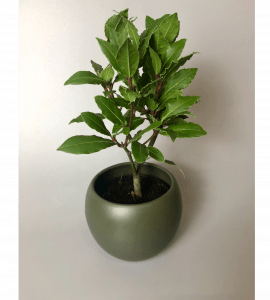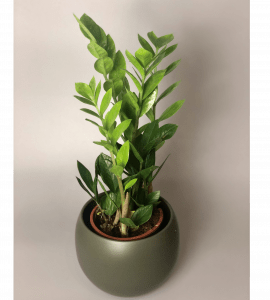The University of Technology Sydney conducted a study that revealed a way to increase the productivity of office workers: planting greenery. A similar conclusion was reached by a group of researchers at the University of Wales, Cardiff. These scientists have proven that the introduction of indoor flowers in the workplace not only improves employee performance indicators, but also indirectly affects the company’s bottom line.
Plants in the workplace have long ceased to be considered an interior item. They improve several indicators at once that directly affect employee performance.
Reducing stress levels. The theory of color psychology states that green promotes general relaxation, reduces blood pressure and muscle tension.
Increase concentration. Living plants reduce the level of digital workload surrounding the employee in the office (especially in the open space).
Health promotion. Research has shown that greening the workplace reduces the incidence of illness within the company by reducing absenteeism and sick leaves, which minimizes additional costs for the firm.
Air purification. Increasing the oxygen concentration in the office allows employees to stay awake for longer and work more efficiently.
Reduced noise level. Large potted plants in the corners of the room absorb echoes from conversations and technology signals.
Flowers for the workplace, first of all, should be unpretentious: it is easy to tolerate temperature extremes, low humidity, do not require frequent watering and spraying. Office vegetation should do without regular feeding and pruning, annual transplanting and supplemental lighting with phytolamps.
For workspaces, it is better to choose non-flowering plant species: the pollen of the inflorescences can cause an allergic reaction, and the pungent aroma easily provokes a headache when inhaled for a long time.
Flowers for work should not shed foliage and change its color with the change of season, look careless or disheveled. Better to choose austere evergreens with simple lines and striking architectural silhouettes.
An evergreen plant with a dense pyramidal crown and shiny smooth leaves. Does not need sunlight, preferring diffused lighting or partial shade. Not afraid of drafts. Water the laurel sparingly and not too often. The plant compensates well for the effect of technology on the body and releases phytoncides.
Decorative leafy flower with a lush crown and heart-shaped petals. Although this plant belongs to flowering plants, its inflorescences do not smell and do not emit pollen. When keeping a flowerpot in a shaded area, flowering may not occur at all.
The pot with spathiphyllum can be used for both tabletop and outdoor gardening. The plant is able to absorb polymer fumes. Doesn’t like drafts. Prefers standard watering. In the cold season it tolerates low temperatures well.
An ornamental plant with thick, complex-pinnate leaves of regular shape. It tolerates high temperatures well, is able to withstand long pauses between waterings. Lighting for this flower is not important: it feels equally good under the sun’s rays and in the shade. Doesn’t need any extra care.
Evergreen lianas with flexible, thin shoots and cordate or oval shiny symmetrical leaves. Tolerates any lighting except direct sunlight. Prefers low temperatures to high, loves abundant watering. Doesn’t like draft.
A warm-loving evergreen tree with small oval leaves. Like spathiphyllum, this office plant belongs to flowering, however, when kept in partial shade and low humidity, it does not produce inflorescences. Contains essential oils, so it emits a strong odor when rubbed on any part of the plant. Doesn’t like drafts. Prefers moderate watering. It tolerates day and night temperature fluctuations.


